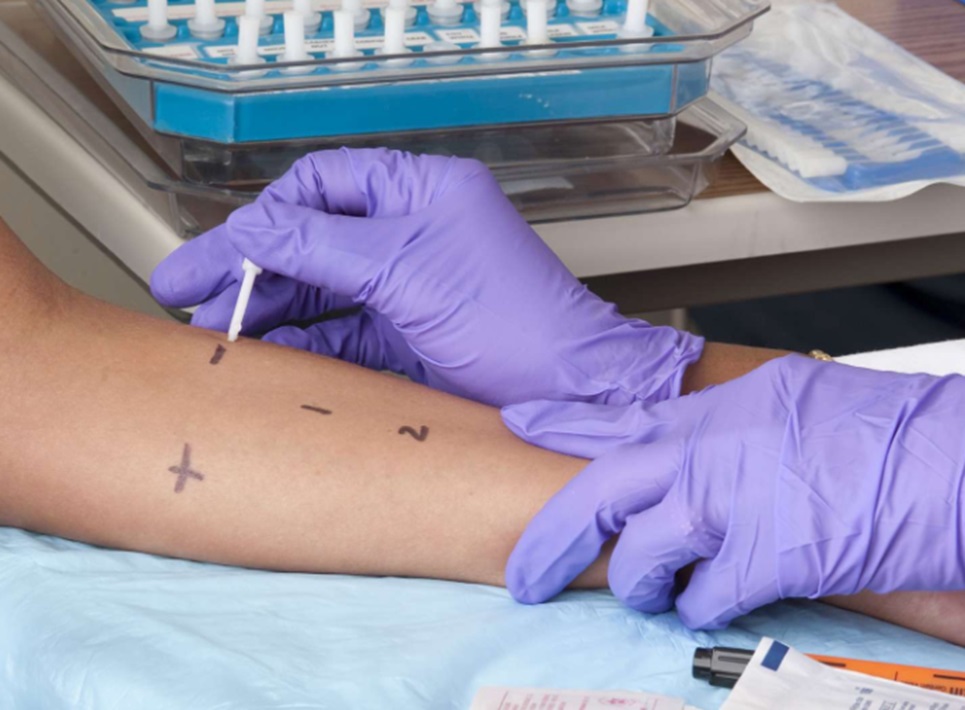Unraveling the Mystery: The Ins and Outs of Penicillin Allergy Testing
Introduction
Penicillin is one of the most commonly prescribed antibiotics worldwide, renowned for its efficacy in treating bacterial infections. However, for some individuals, the use of penicillin is not without risk due to the potential for allergic reactions. Penicillin allergy can range from mild skin rashes to life-threatening anaphylaxis, making it crucial to accurately diagnose this allergy. In this blog post, we delve into the intricacies of penicillin allergy testing, shedding light on its importance, methods, and implications.
The Need for Penicillin Allergy Testing
The mislabeling of penicillin allergy can have significant consequences for patient care. When a patient’s medical history lists a penicillin allergy, healthcare providers often resort to alternative, broader-spectrum antibiotics, which may be less effective, more expensive, or carry higher risks of adverse effects. Moreover, prolonged use of alternative antibiotics can contribute to the development of antibiotic resistance, a growing global health concern.
By accurately identifying individuals who are truly allergic to penicillin, healthcare providers can optimize antibiotic therapy, ensuring patients receive the most effective treatment while minimizing the risks of adverse reactions and antibiotic resistance. Penicillin testing plays a crucial role in this process, enabling healthcare providers to make informed decisions about antibiotic prescribing.
What Does a Penicillin Allergy Test Involve?
An allergy test is typically a two-step process. The first step is a skin test, where the doctor applies a small amount of penicillin to your skin using a tiny needle. If you’re allergic, you’ll develop a raised bump or rash at the test site within 15 to 20 minutes.
If the skin test is negative, the next step is an oral challenge. This involves giving you a small dose of penicillin to swallow while under medical supervision. If there’s no reaction after an hour, the doctor will give you a full dose. If you still show no signs of an allergic reaction, it’s likely that you’re not allergic to penicillin.
Importance of Penicillin Allergy Testing
Accurate diagnosis of penicillin allergy is paramount for several reasons. Firstly, mislabeling someone as penicillin-allergic can lead to the avoidance of penicillin and related antibiotics, resulting in the use of alternative, often less effective, and more expensive antibiotics. This avoidance can also contribute to the emergence of antibiotic resistance, a significant global health concern. Secondly, a documented penicillin allergy may limit treatment options in various medical scenarios, potentially compromising patient care. Therefore, conducting appropriate allergy testing is crucial to avoid unnecessary avoidance of penicillin and its derivatives.
Methods of Penicillin Allergy Testing
Penicillin testing encompasses various methods aimed at determining whether an individual is genuinely allergic to penicillin. These methods can be broadly categorized into two main approaches: skin testing and drug provocation testing.
- Skin Testing: Skin testing is the most commonly used method for diagnosing penicillin allergy. During this procedure, small amounts of penicillin and its breakdown products are applied to the skin, typically through a scratch or prick. The skin is then observed for signs of an allergic reaction, such as redness, swelling, or hives. Skin testing is considered highly sensitive, meaning it can detect even mild allergic reactions.
- Drug Provocation Testing: In cases where skin testing results are inconclusive or unavailable, drug provocation testing may be performed under medical supervision. During this procedure, the patient is administered a small, gradually increasing dose of penicillin under close observation. If no allergic reaction occurs, it is deemed safe for the patient to receive penicillin in the future.
It’s important to note that penicillin testing should only be conducted by trained healthcare professionals experienced in managing allergic reactions. Additionally, certain medications and medical conditions may preclude individuals from undergoing allergy testing, necessitating careful evaluation by a healthcare provider.
Implications of Penicillin Allergy Testing
Accurate allergy testing can have far-reaching implications for patient care, antibiotic stewardship, and public health. By confirming or ruling out penicillin allergy, healthcare providers can:
- Optimize Antibiotic Therapy: Patients identified as non-allergic to penicillin can safely receive this highly effective antibiotic, potentially reducing the need for broader-spectrum alternatives and associated risks.
- Prevent Adverse Drug Reactions: Avoiding unnecessary avoidance of penicillin can prevent adverse reactions to alternative antibiotics, which may be less well-tolerated or more likely to cause side effects.
- Combat Antibiotic Resistance: By promoting the appropriate use of penicillin, accurate allergy testing contributes to antibiotic stewardship efforts aimed at preserving the effectiveness of antibiotics and combating the rise of antibiotic-resistant bacteria.
- Enhance Patient Safety and Satisfaction: Patients who can safely receive penicillin benefit from more effective treatment options, leading to improved clinical outcomes and greater satisfaction with their healthcare experience.
Conclusion
Penicillin allergy testing plays a vital role in accurately diagnosing penicillin allergy and guiding antibiotic therapy decisions. By differentiating between true allergy and perceived sensitivity, healthcare providers can optimize patient care, prevent adverse drug reactions, and contribute to antibiotic stewardship efforts. As our understanding of penicillin allergy continues to evolve, ongoing research and advancements in testing methodologies promise to further improve the accuracy and accessibility of allergy assessment. By leveraging these tools effectively, healthcare providers can ensure that patients receive the most appropriate and effective antibiotic therapy while minimizing the risks associated with misdiagnosed penicillin allergy.




